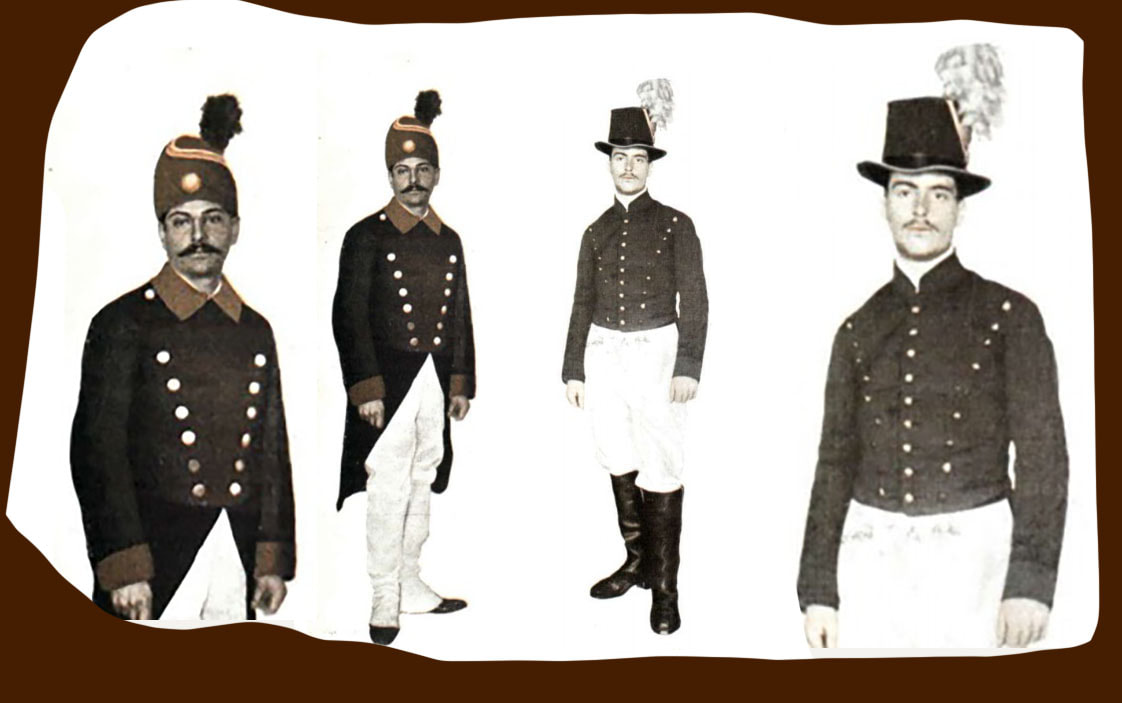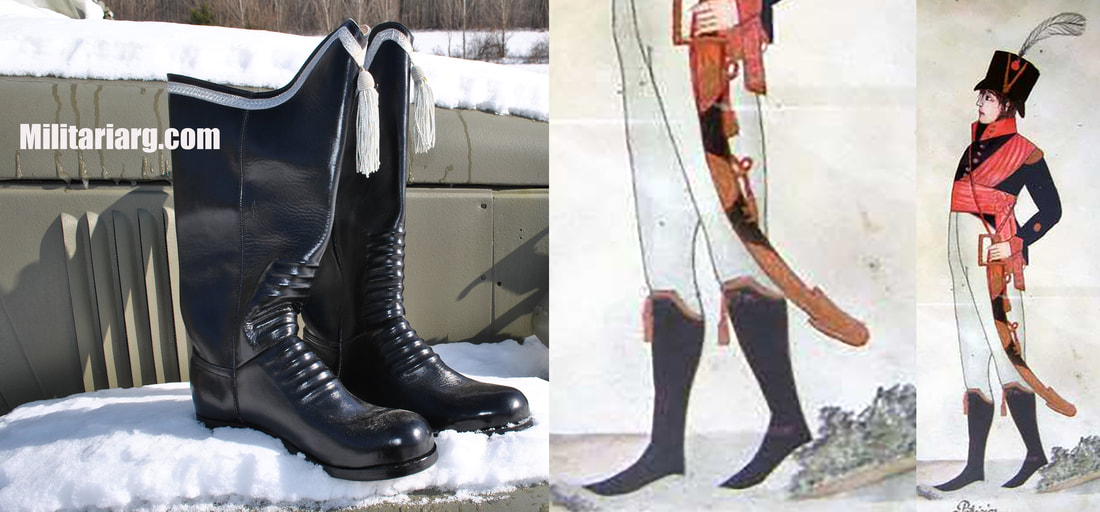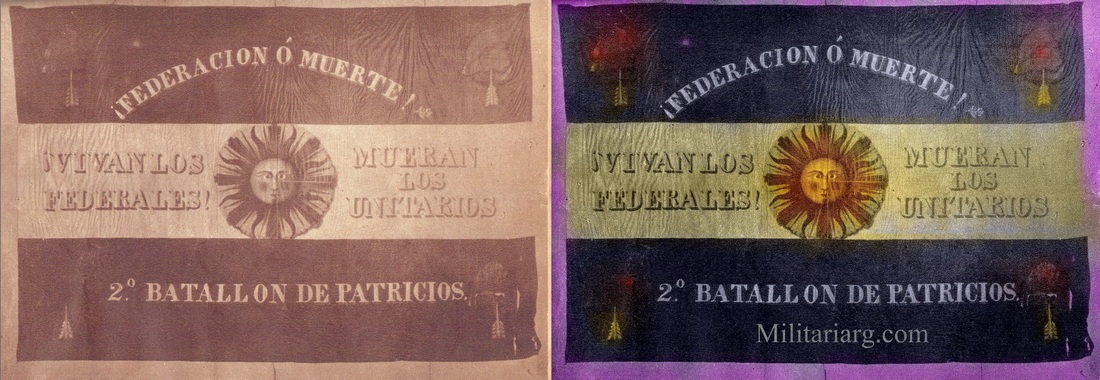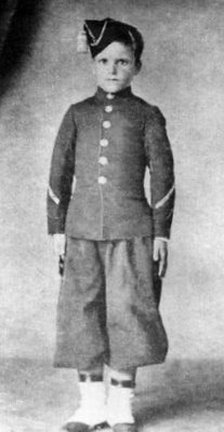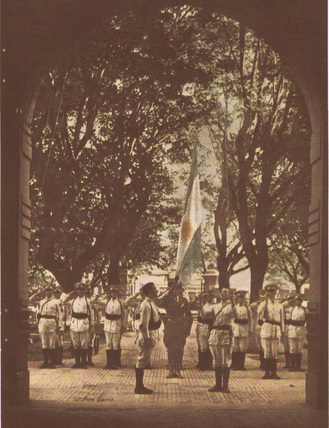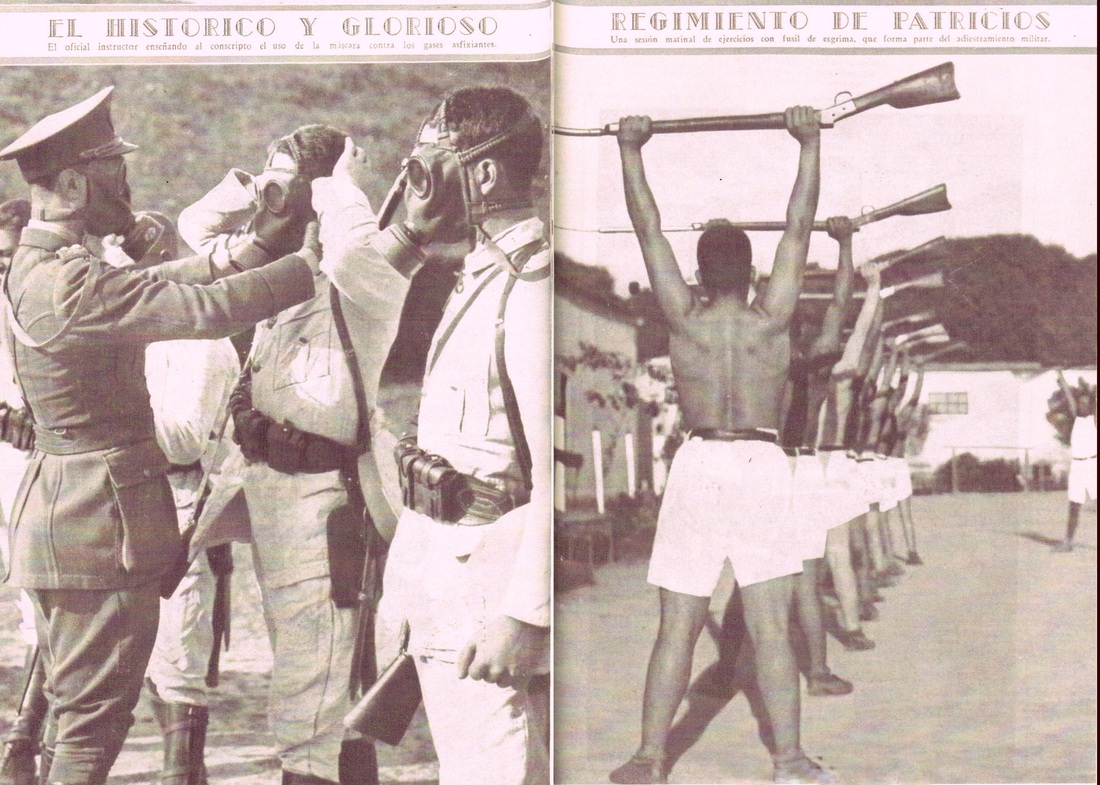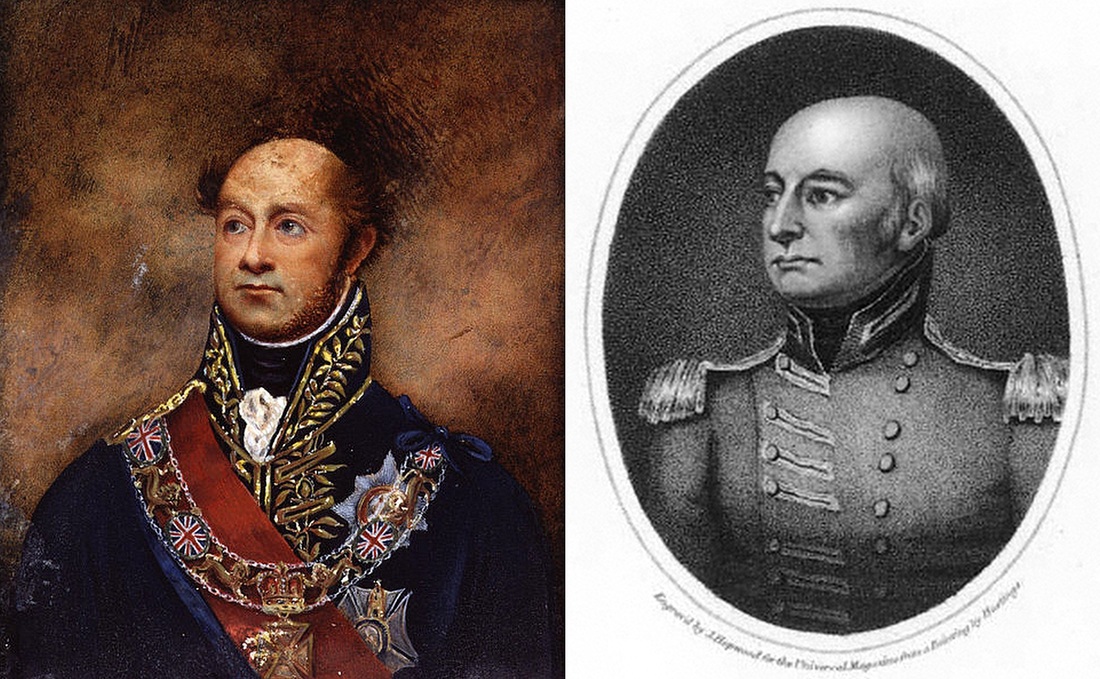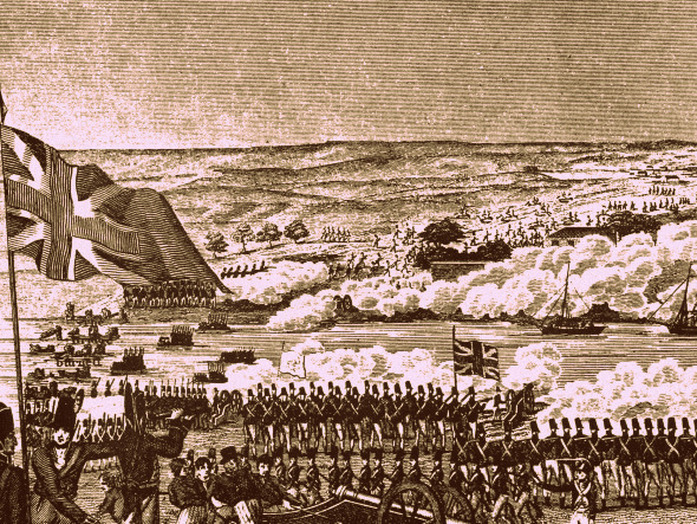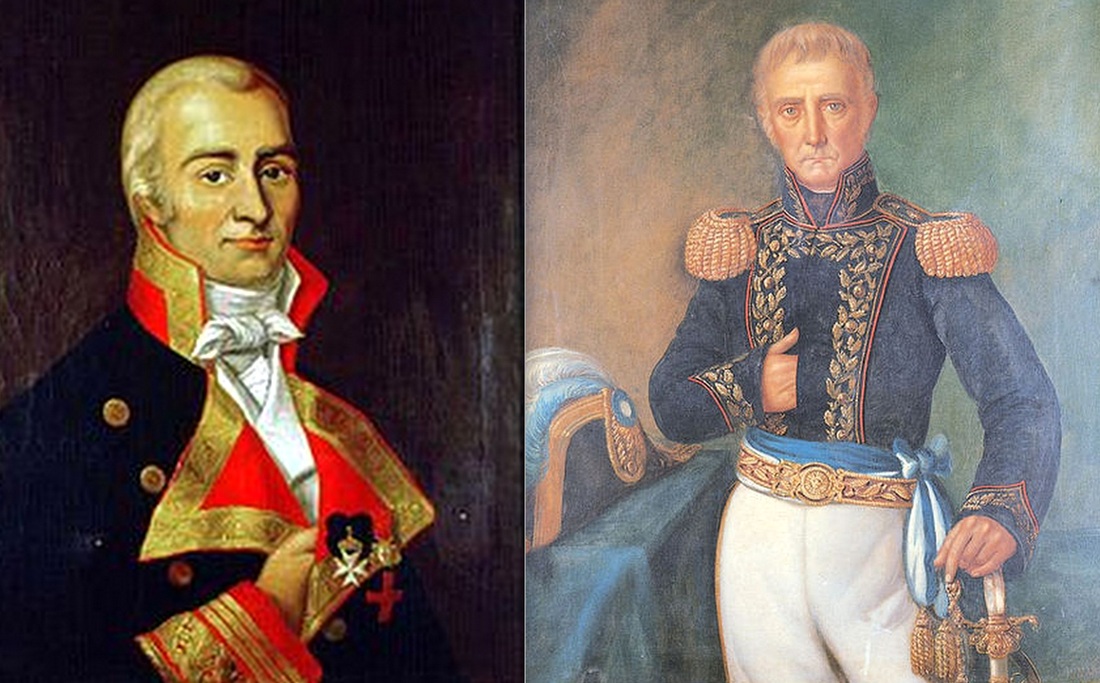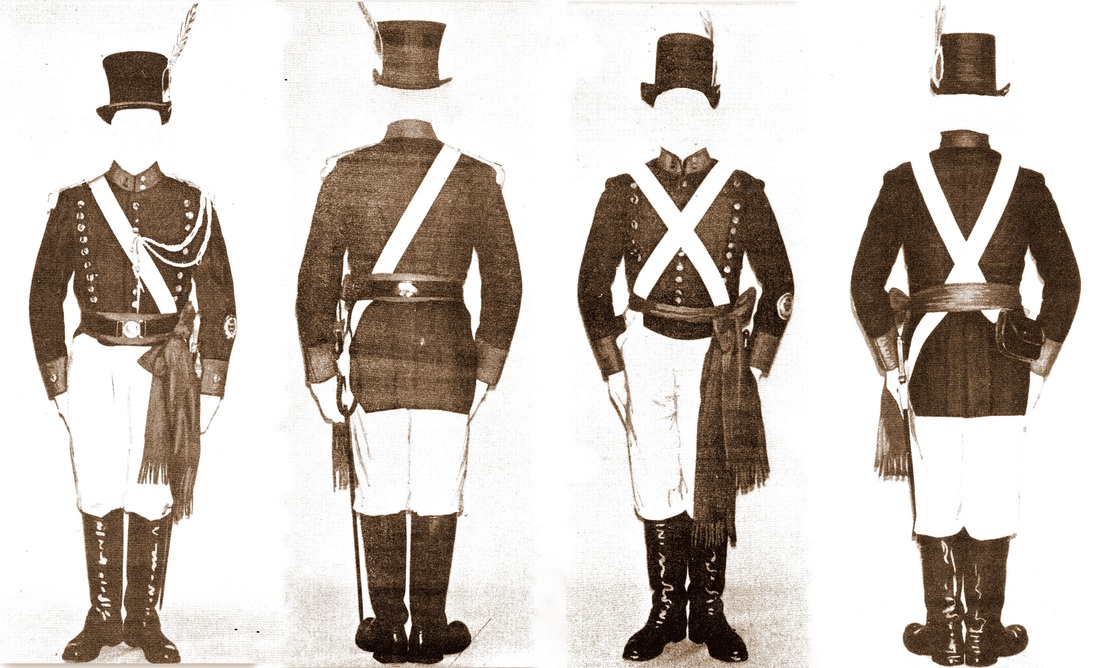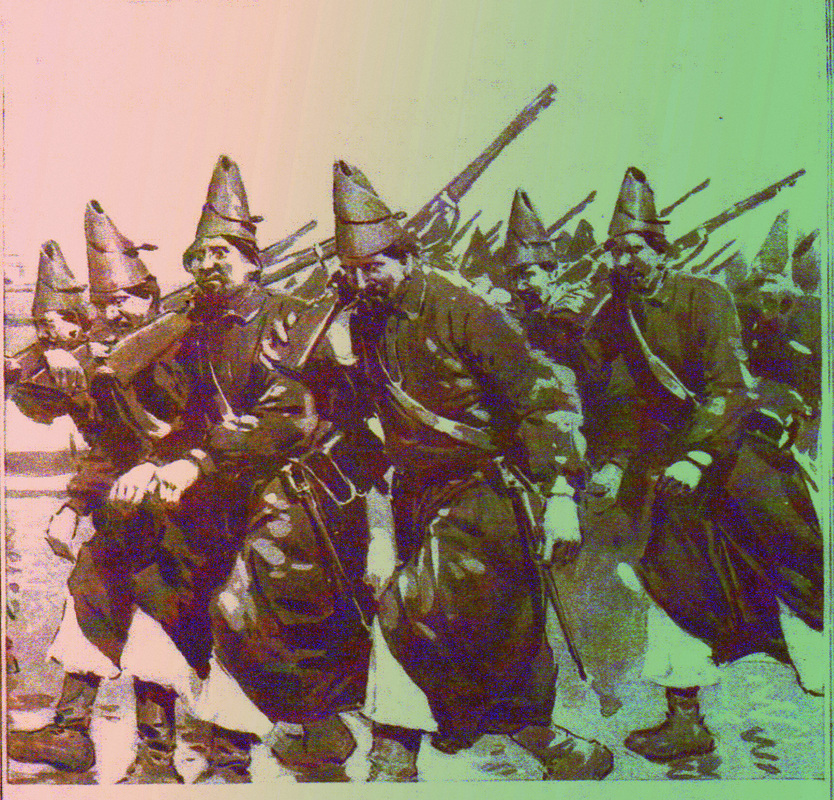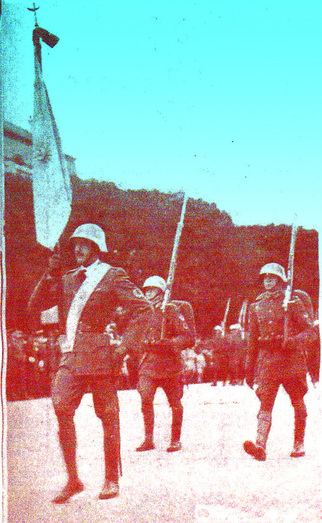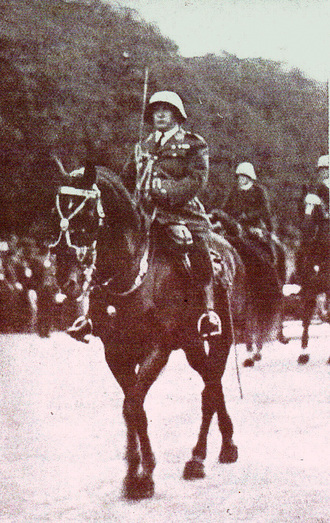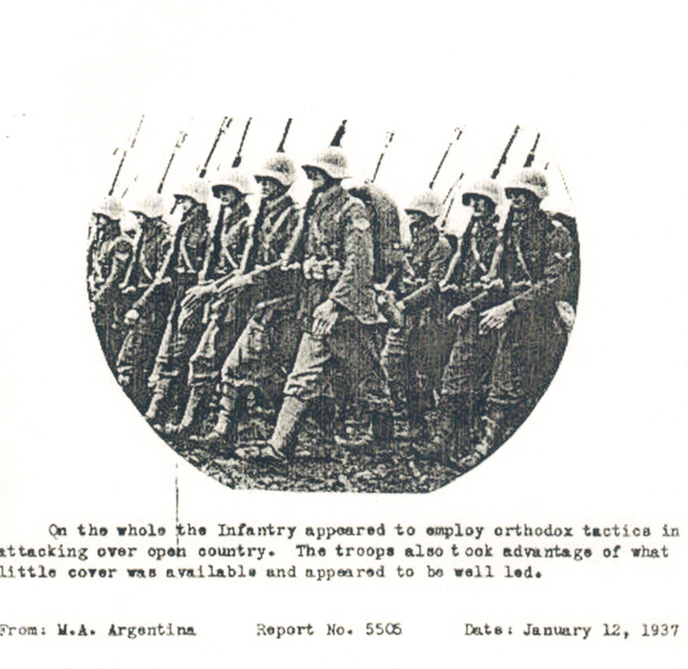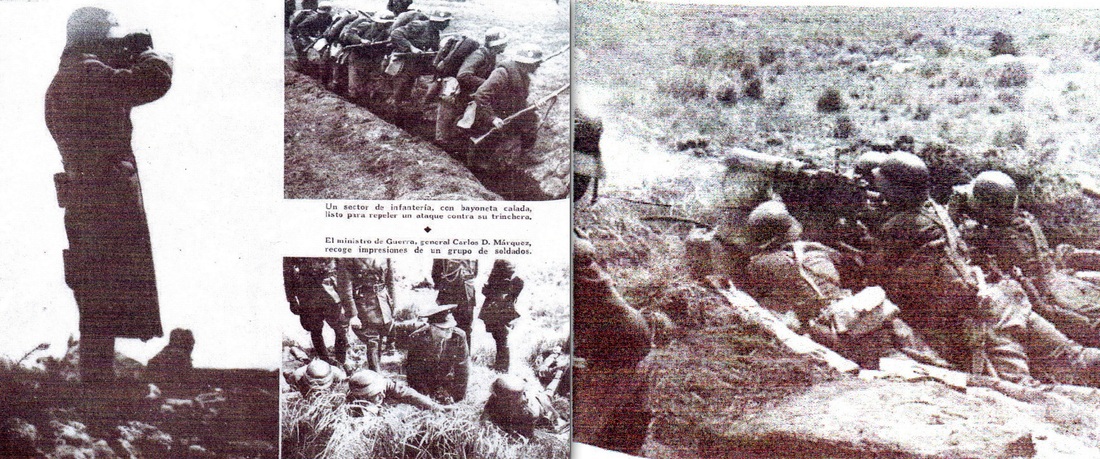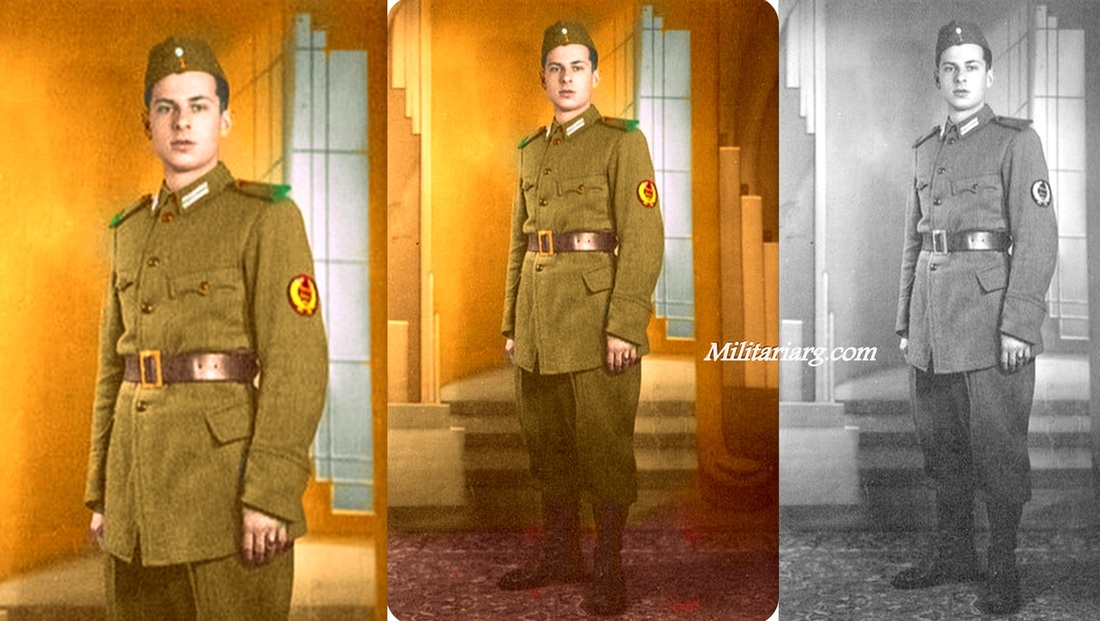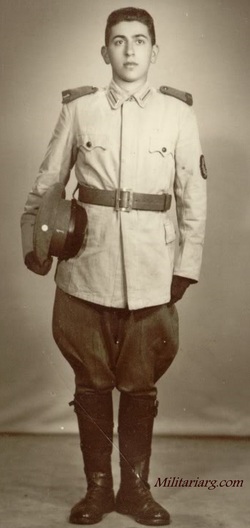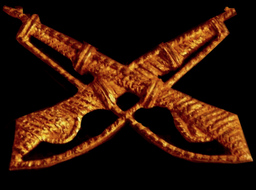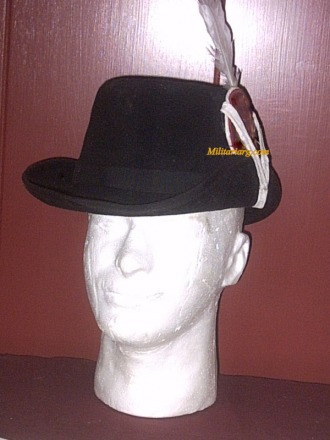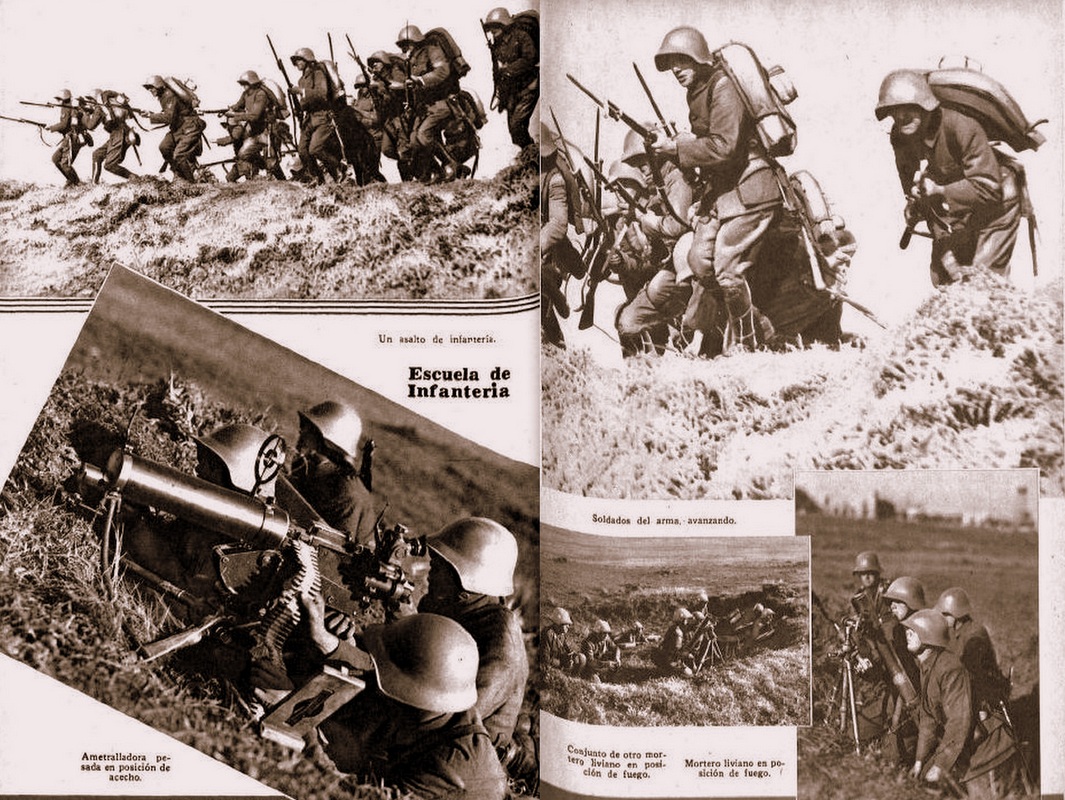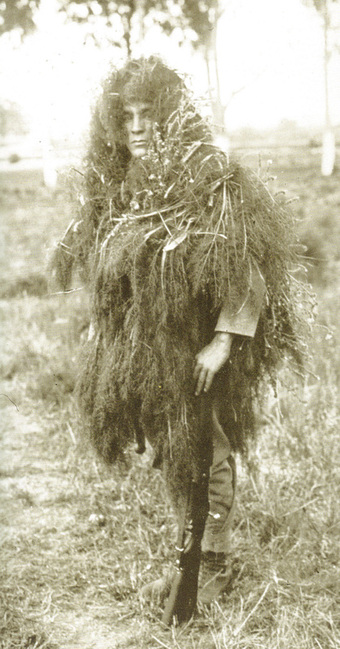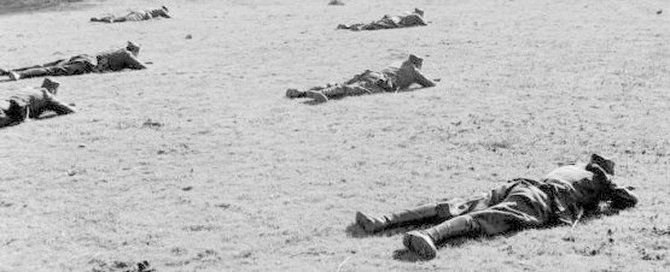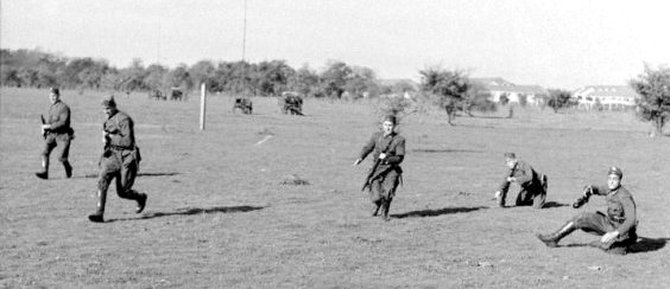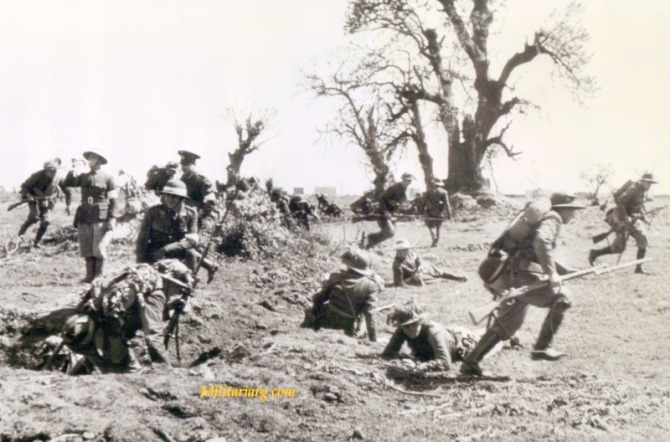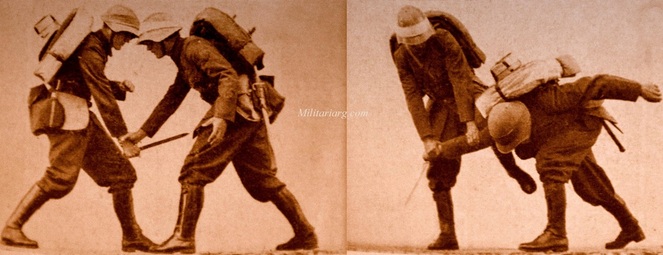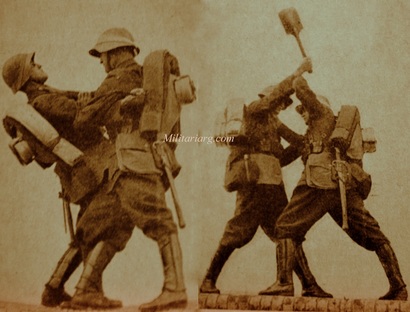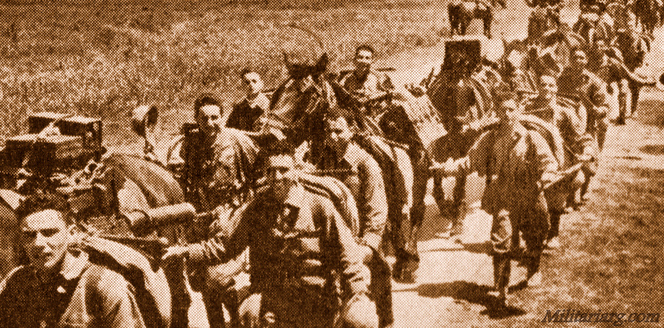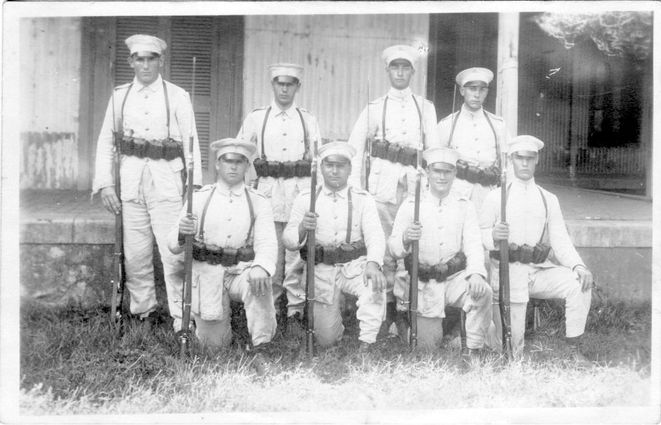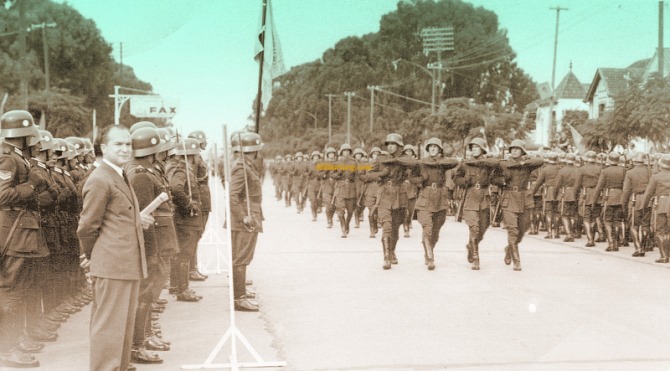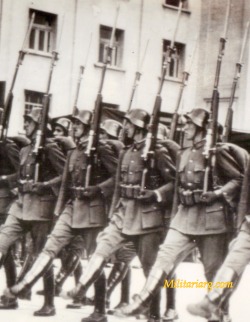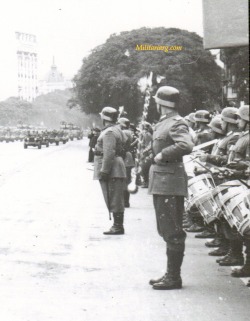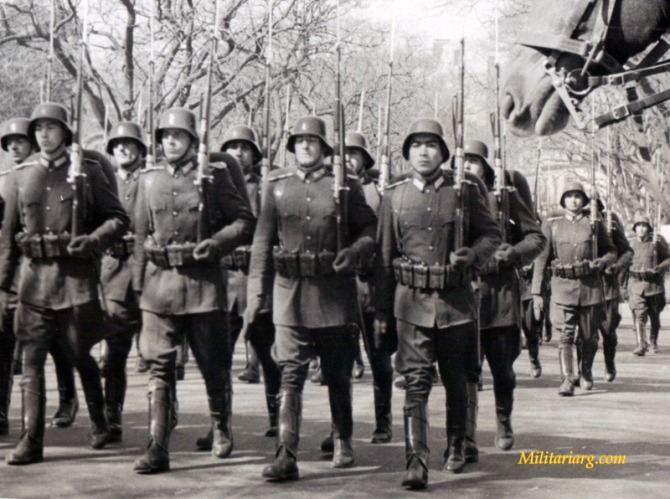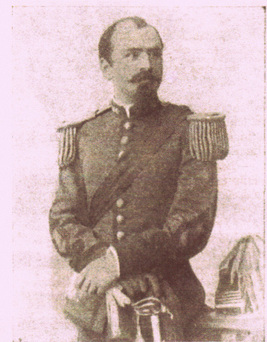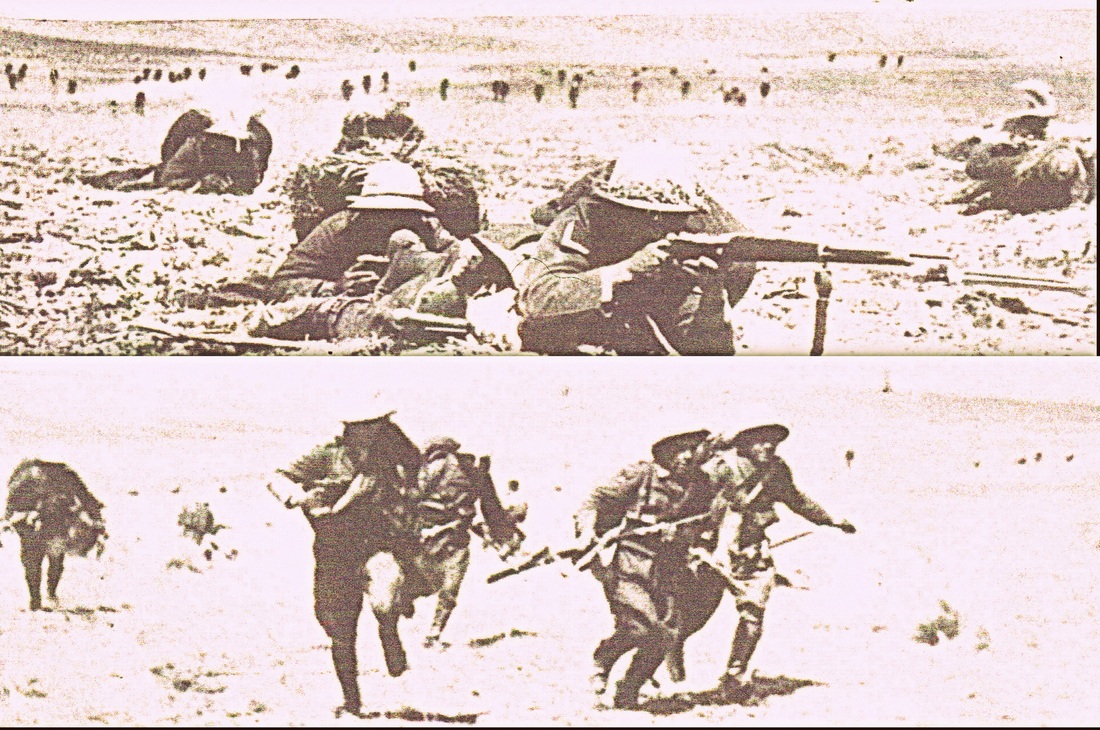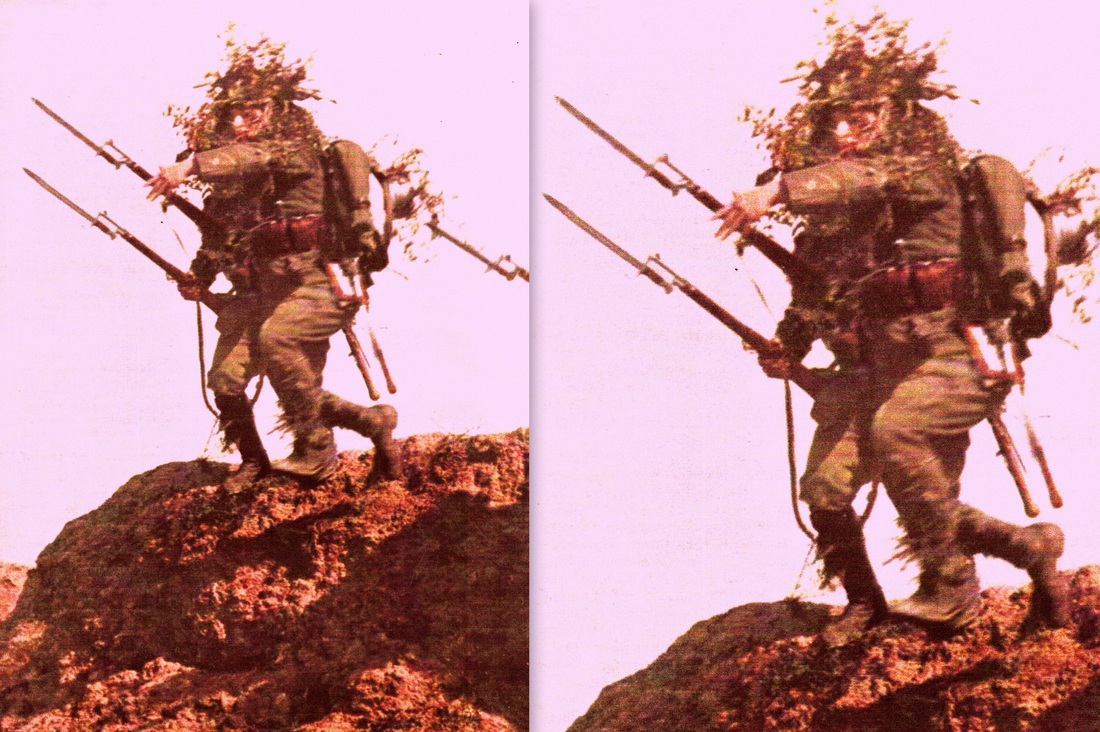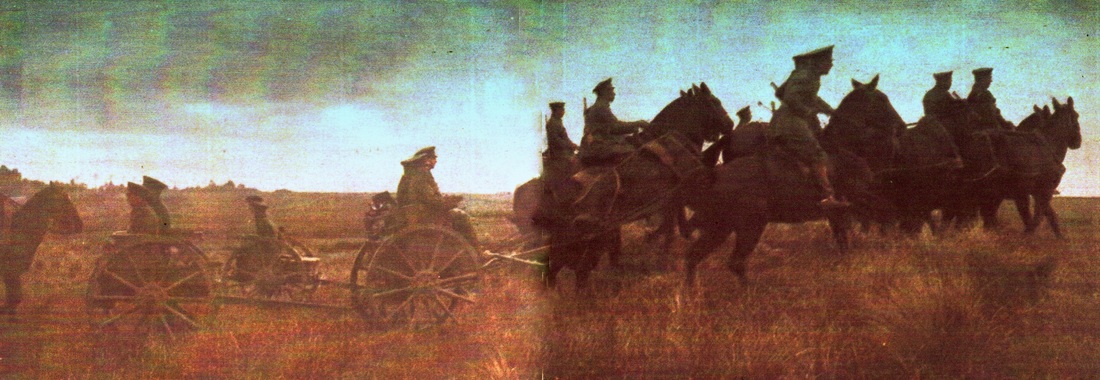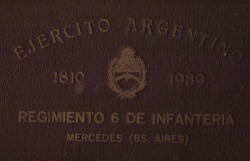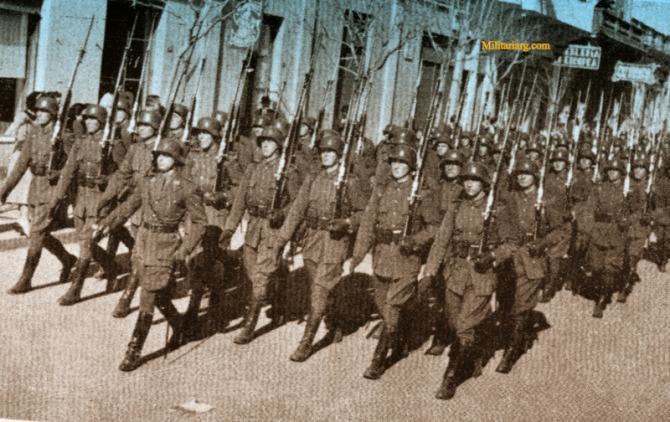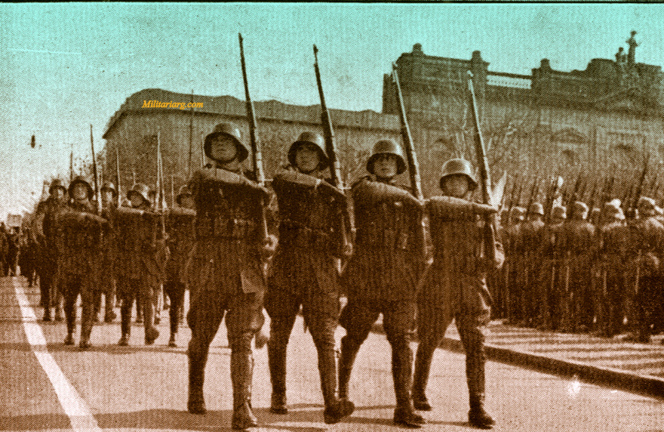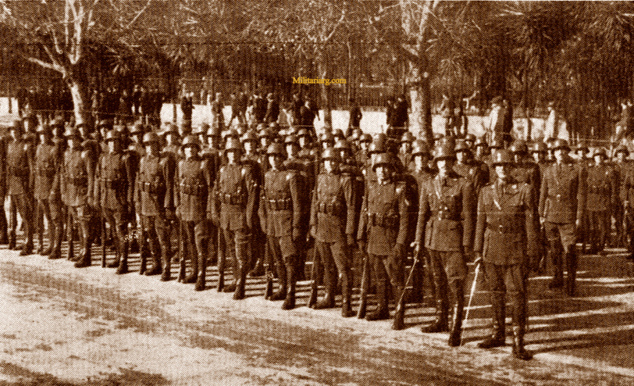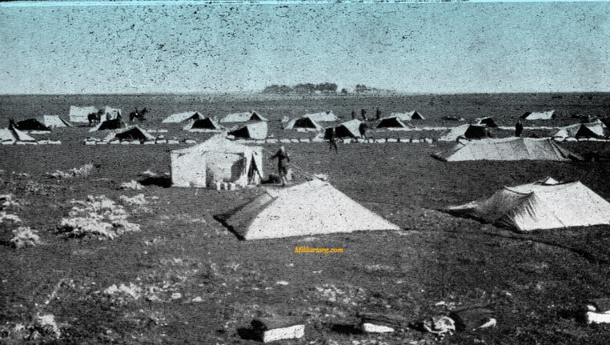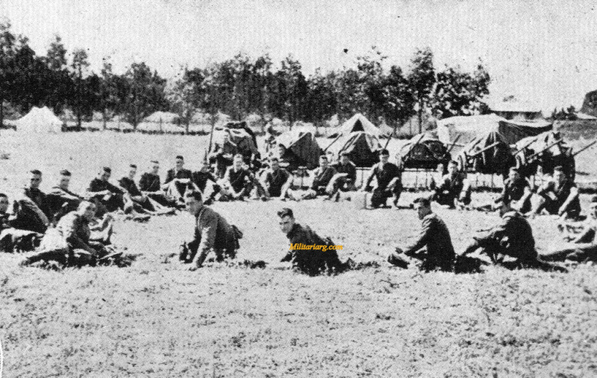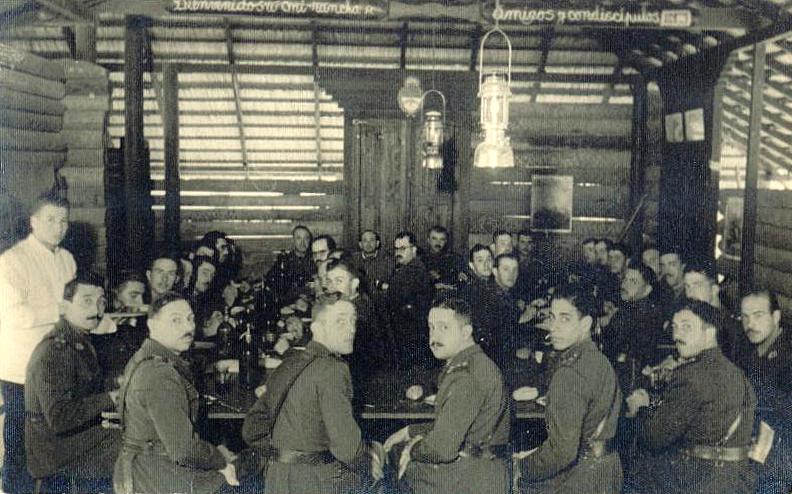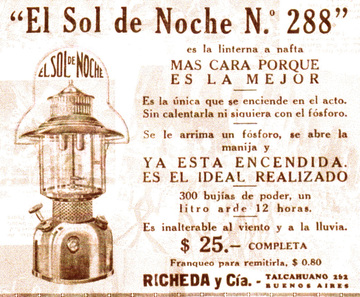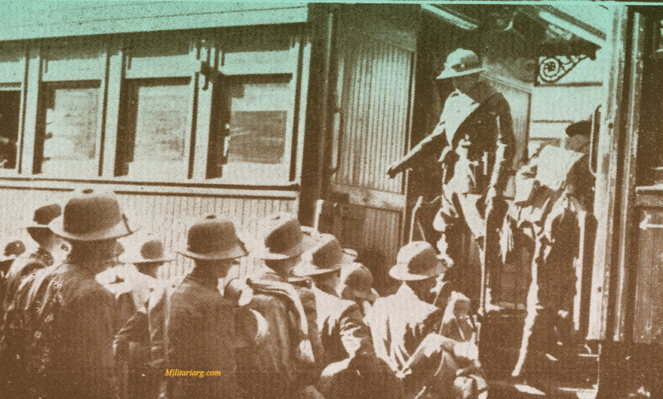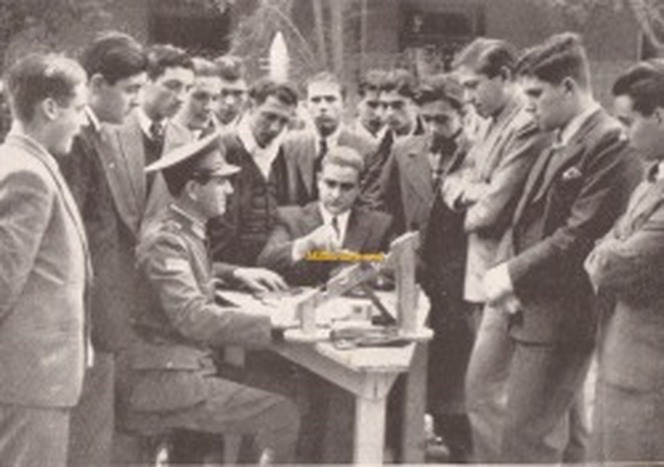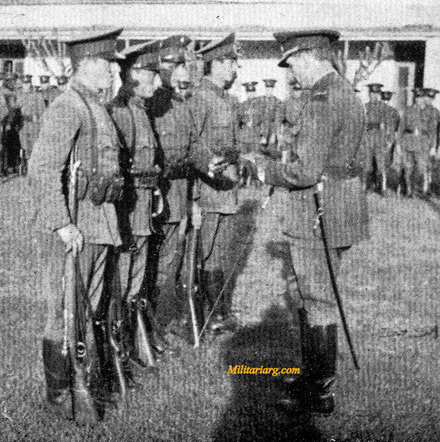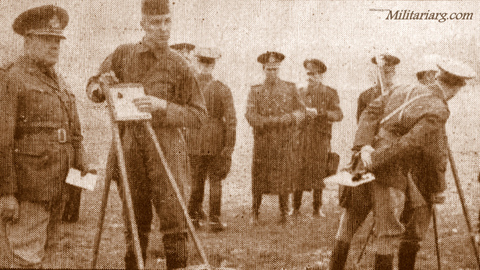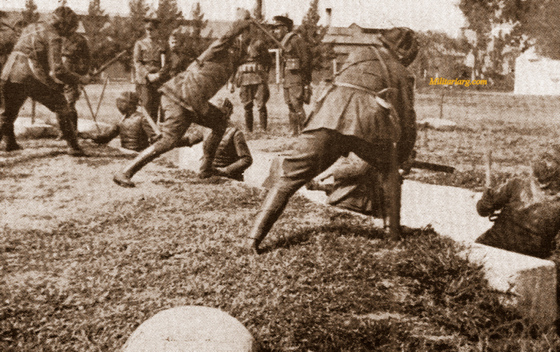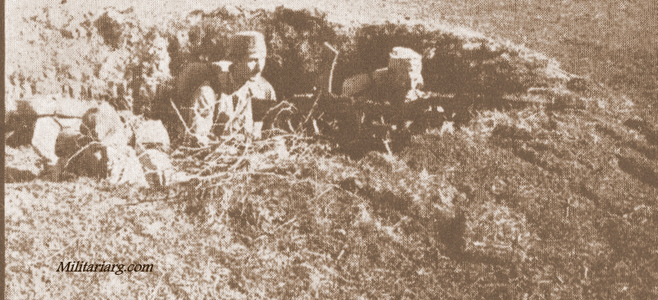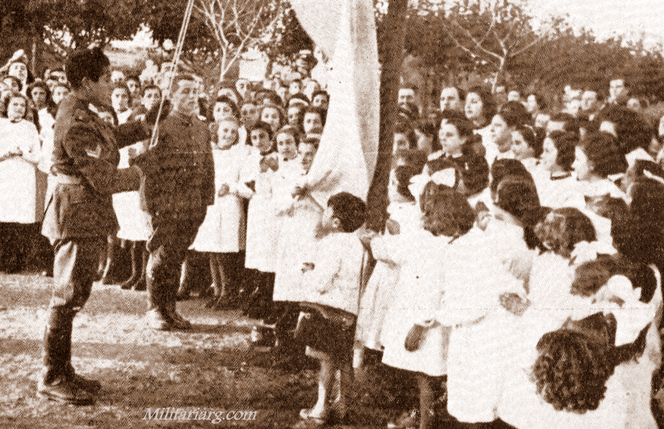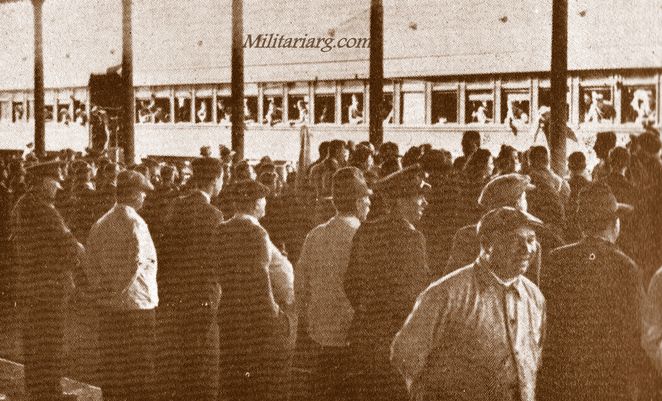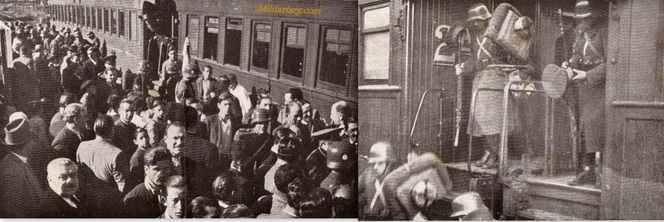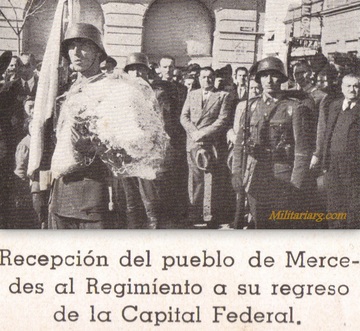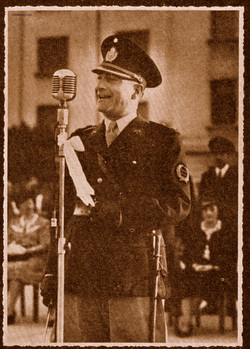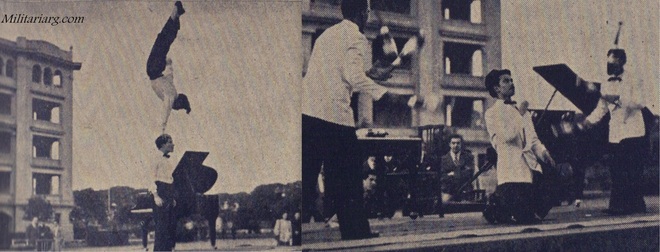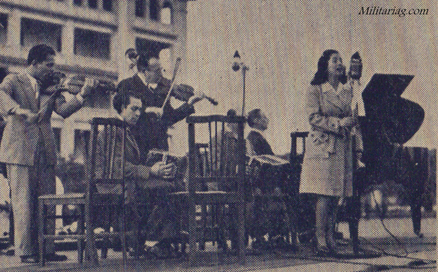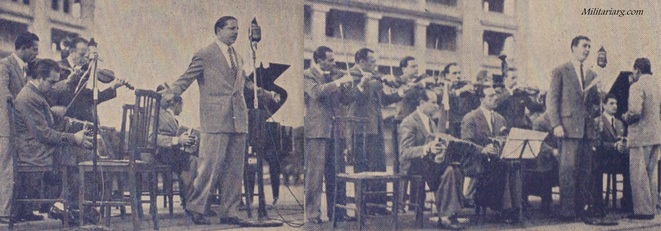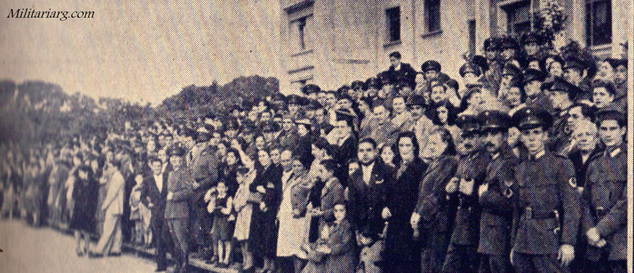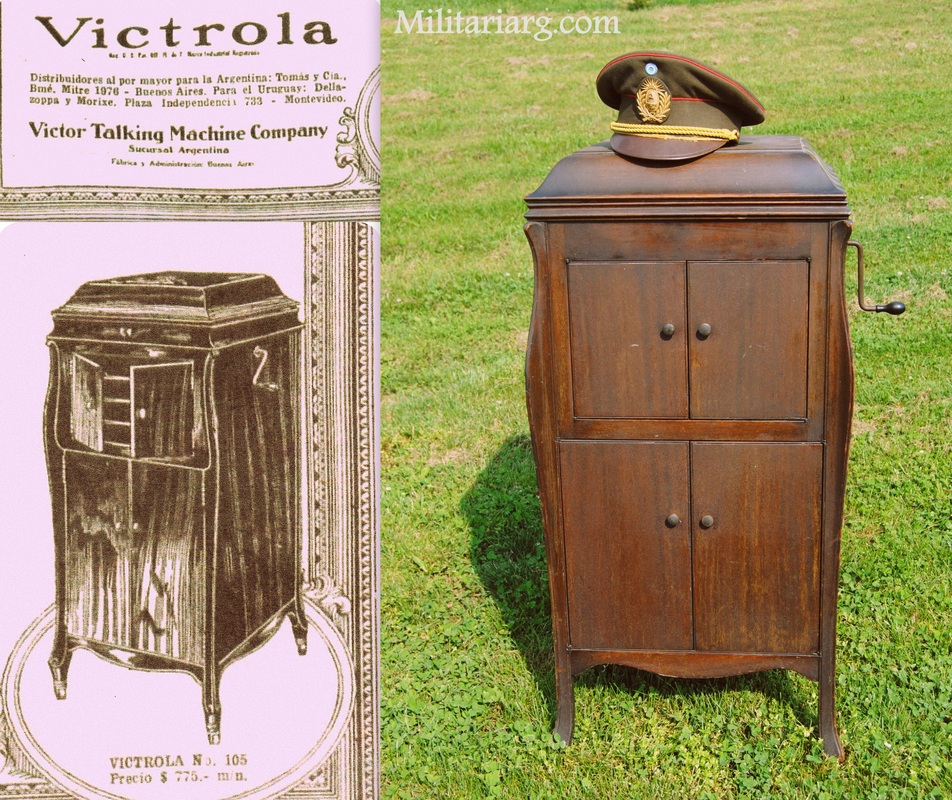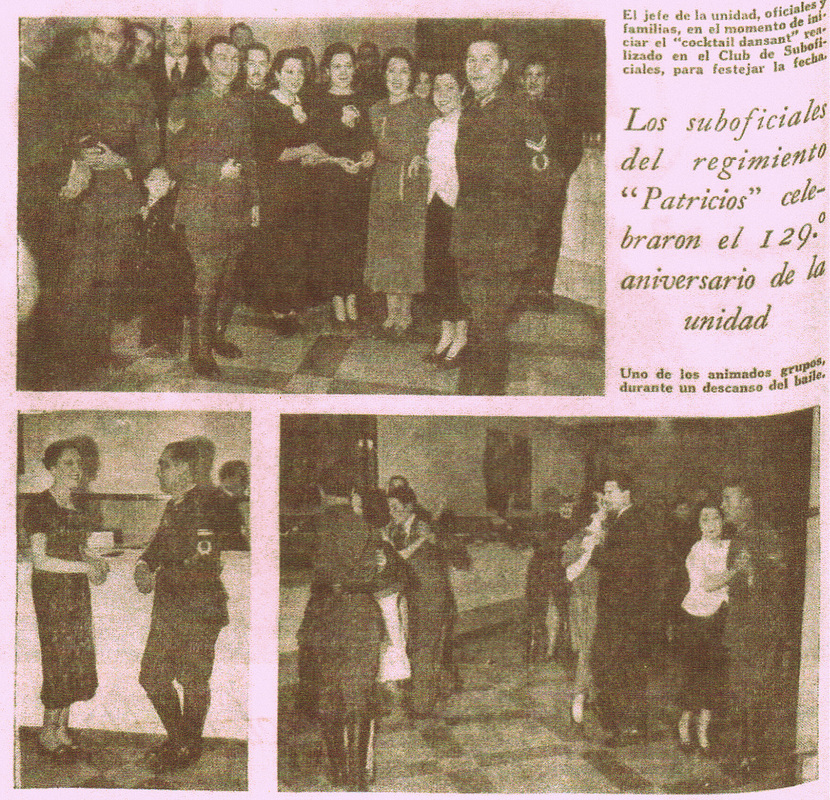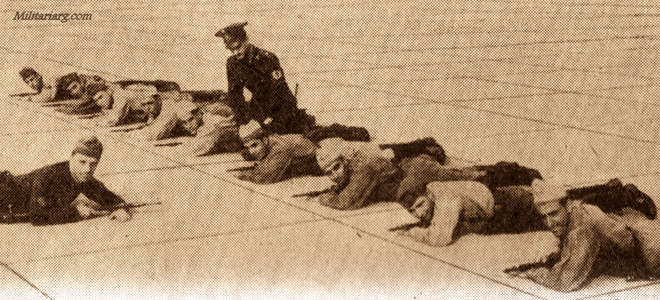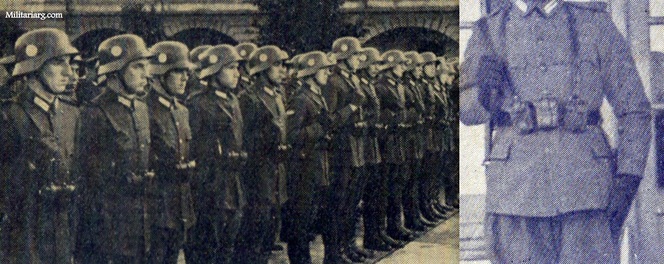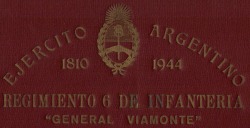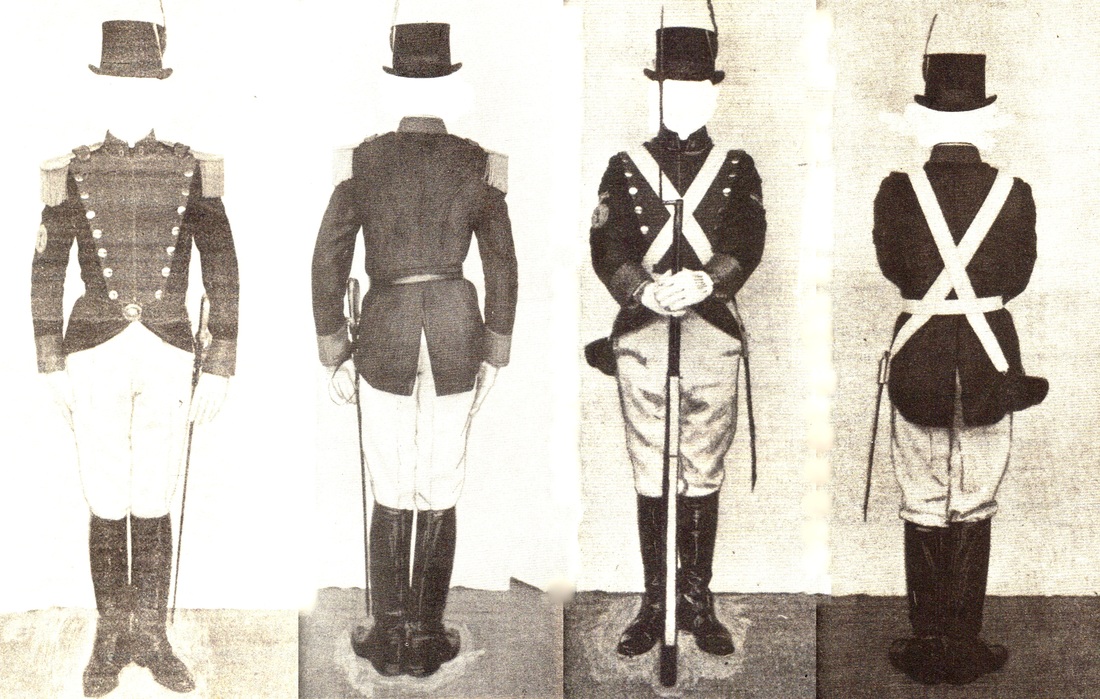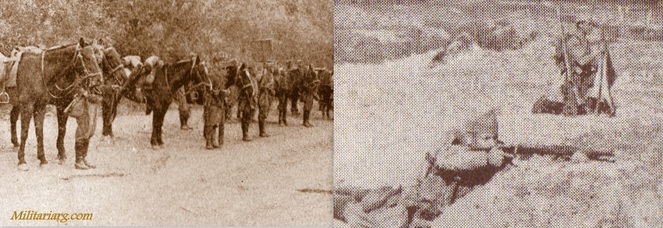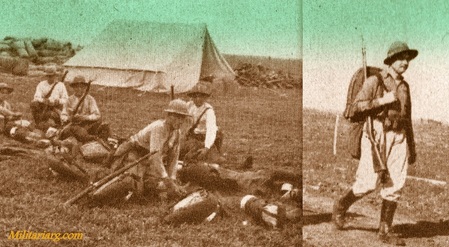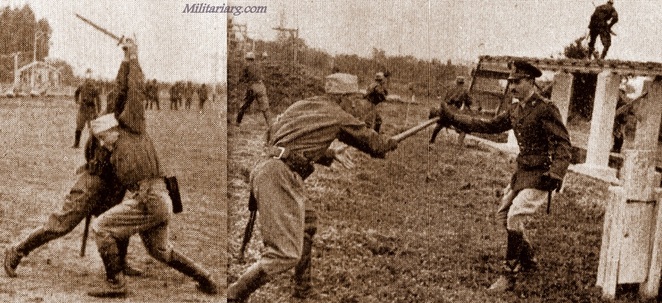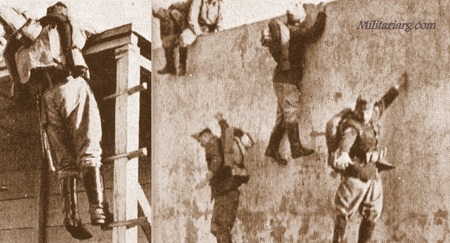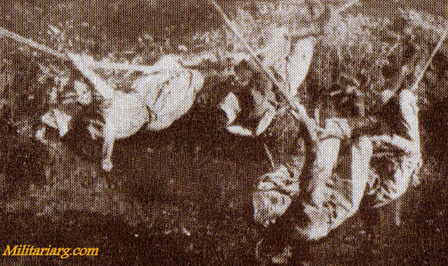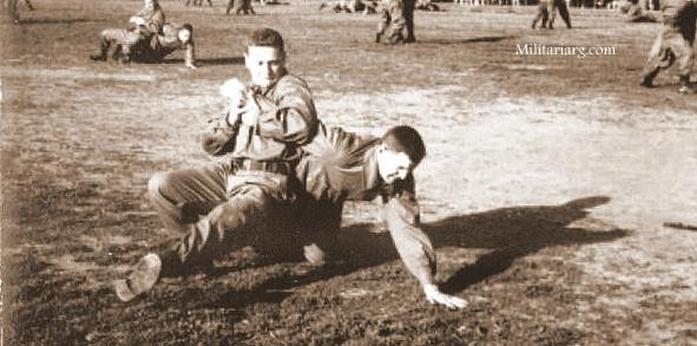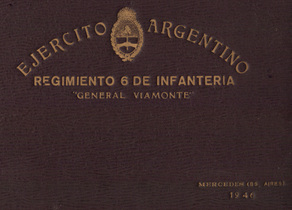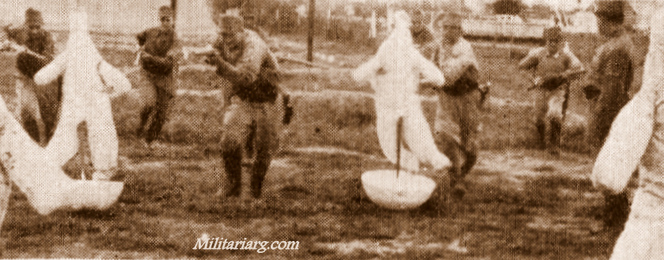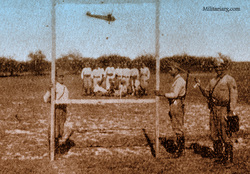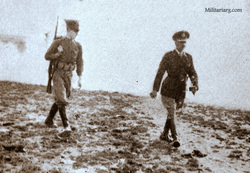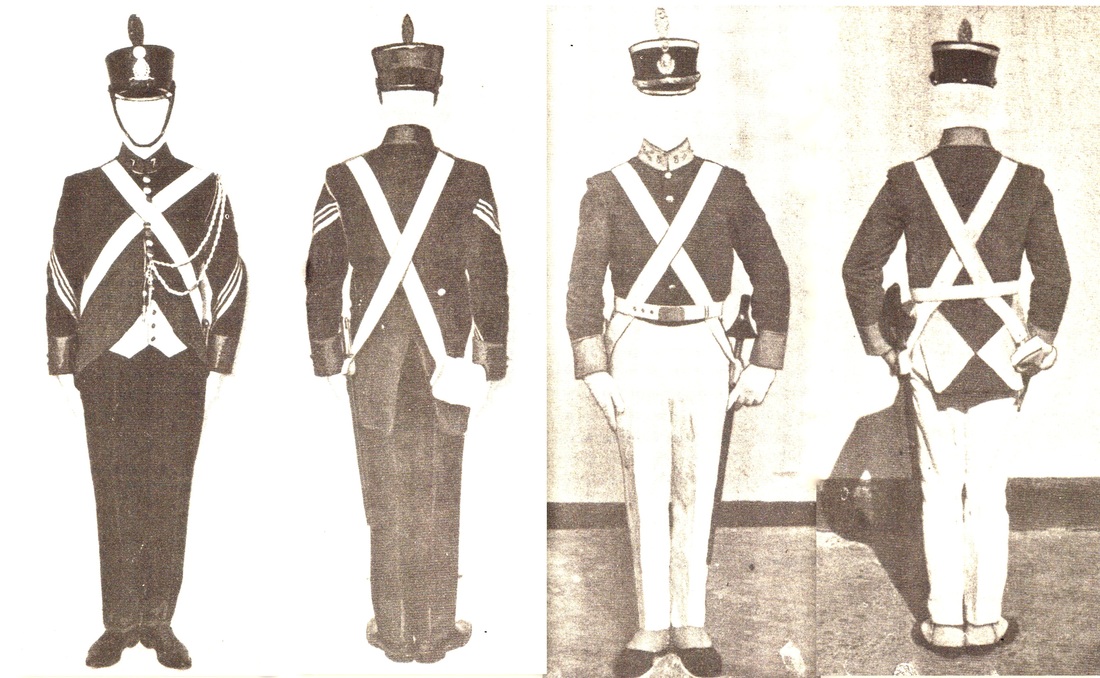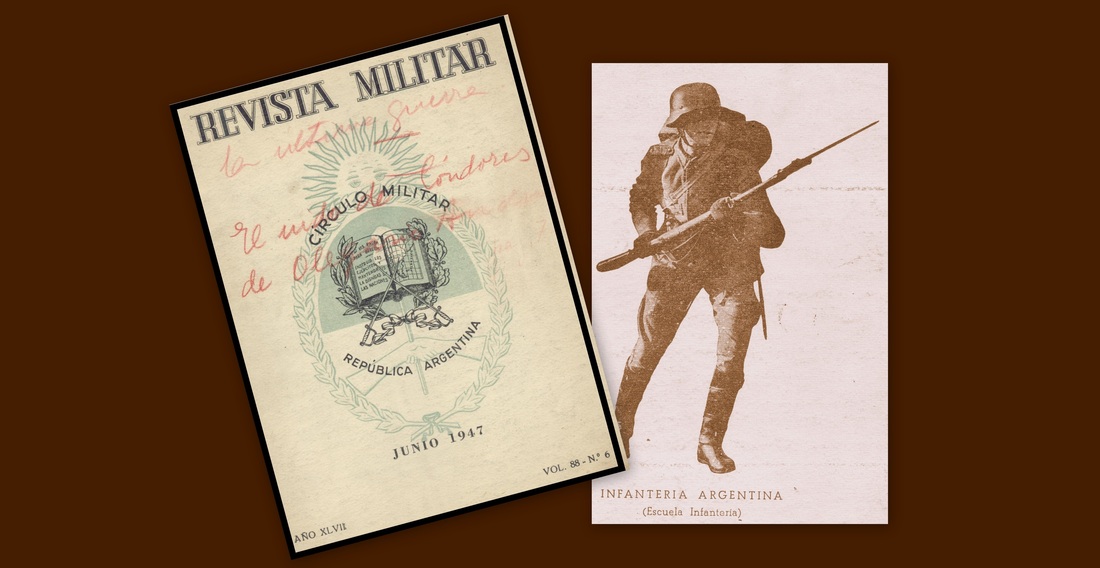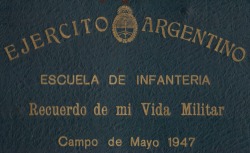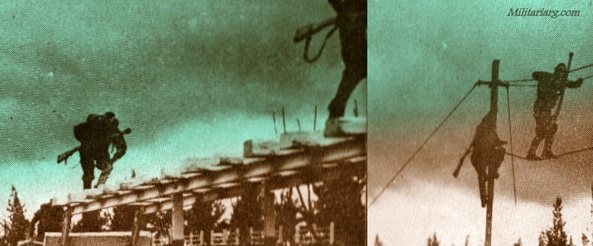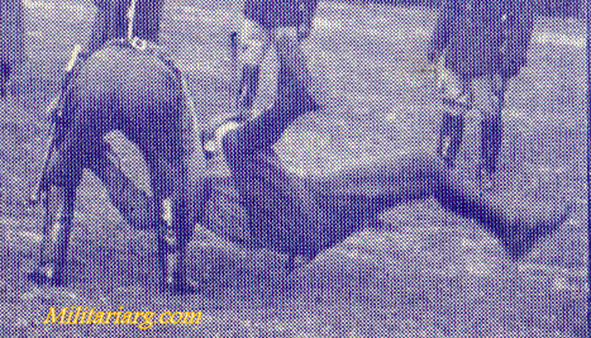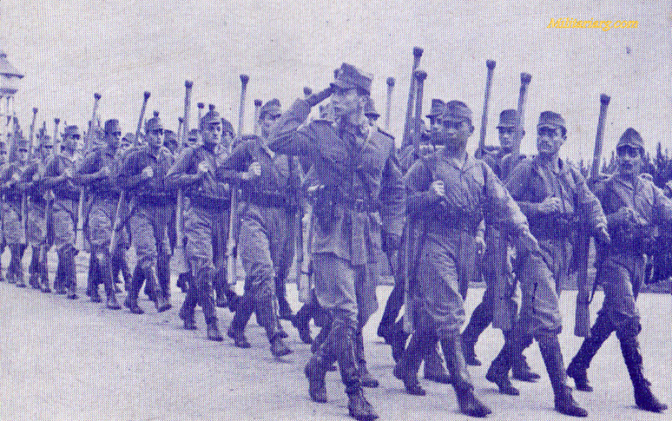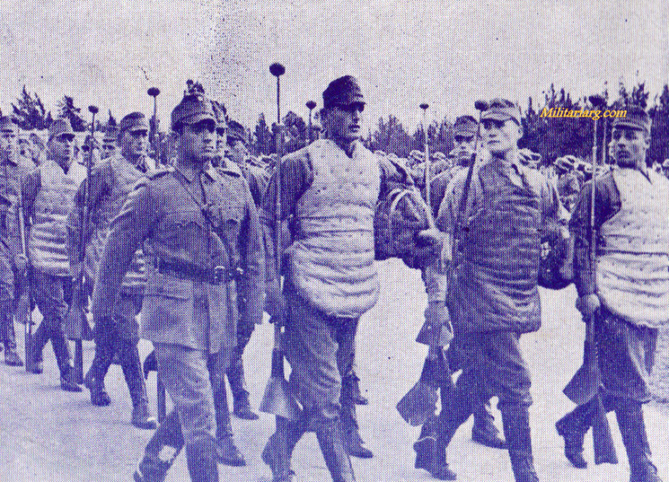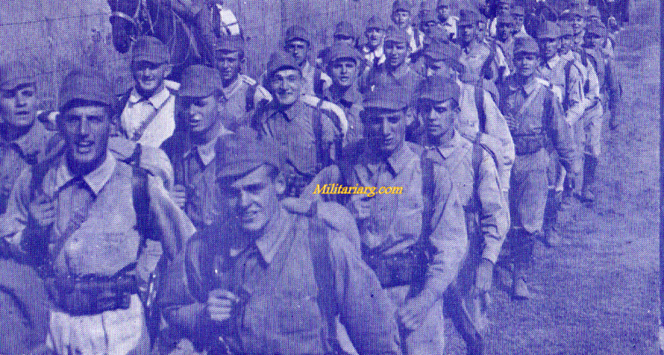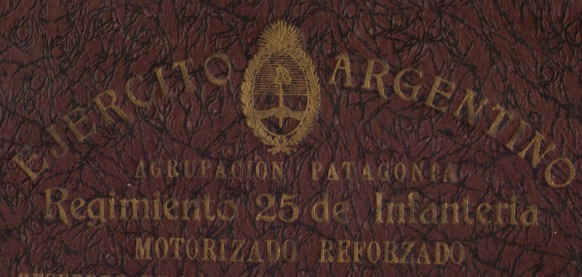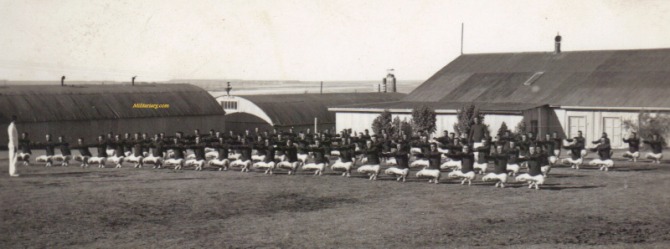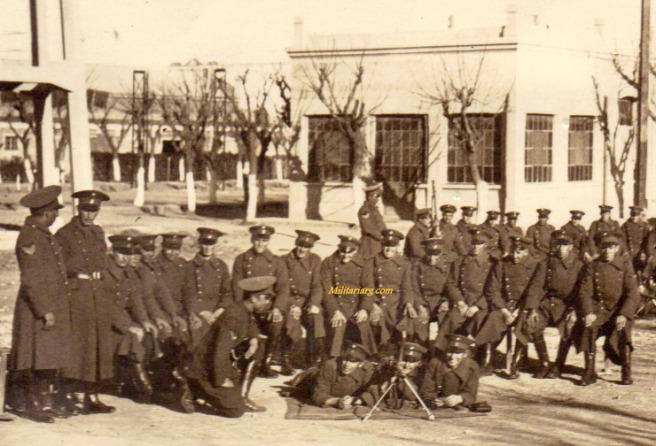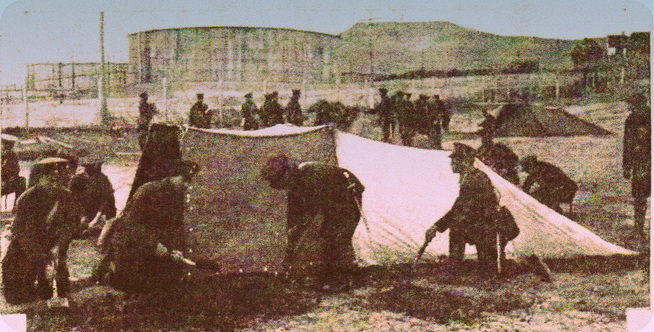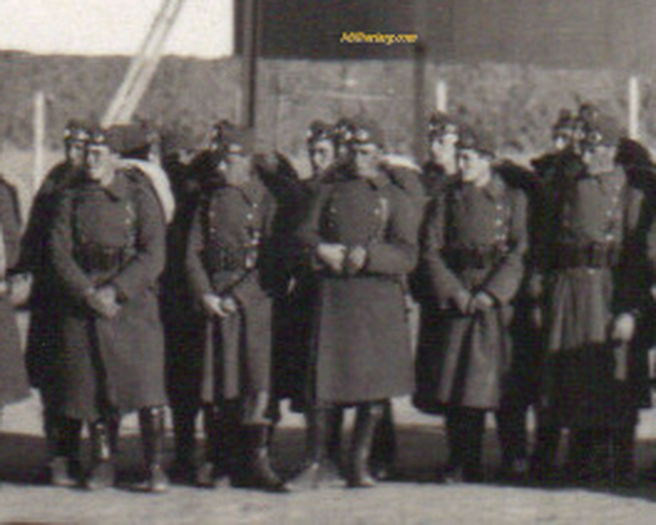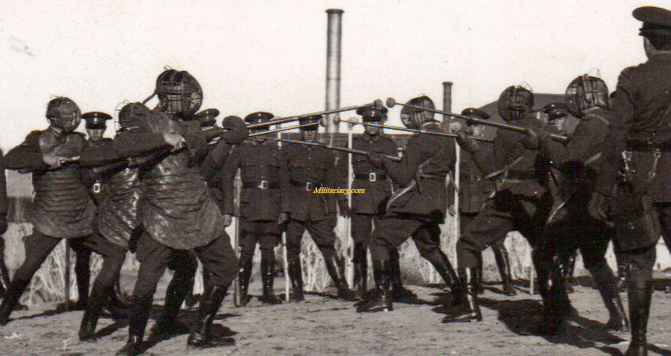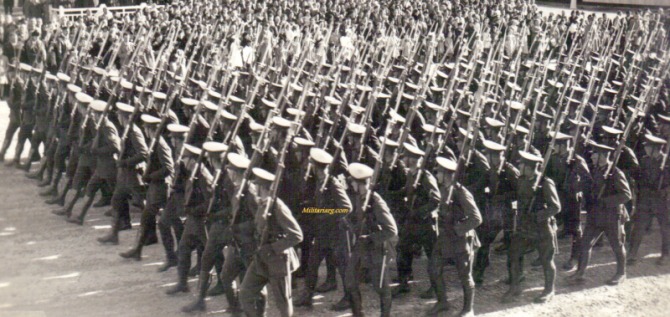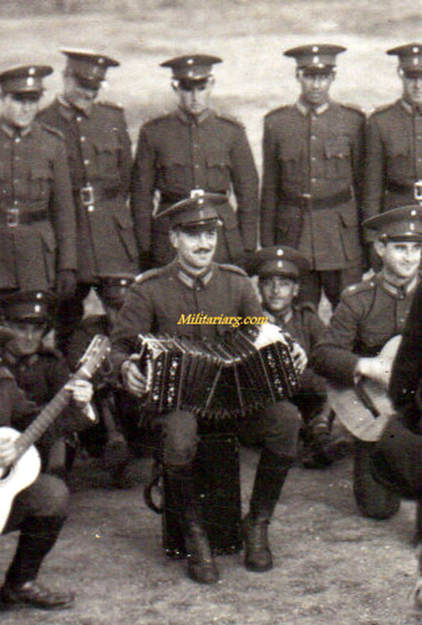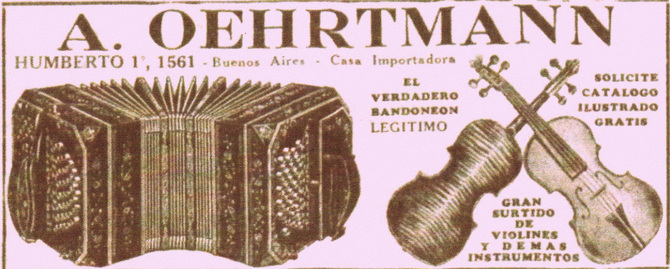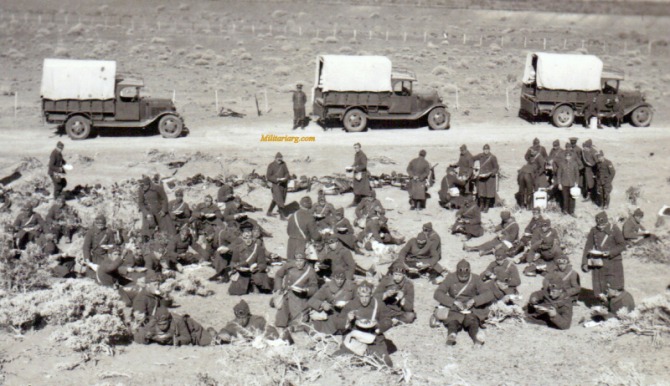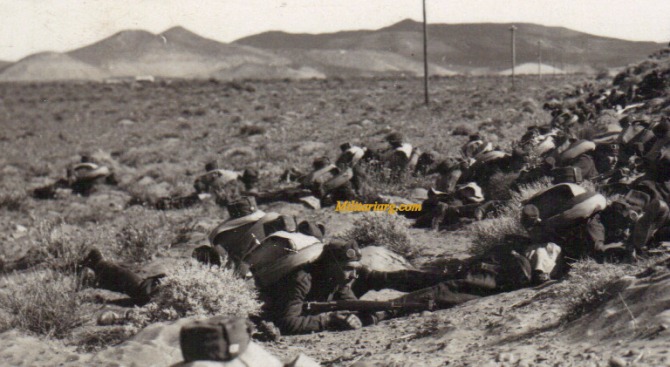Historical reconstruction of the uniforms of Granaderos de Terrada and Patricios from the magazine Caras y Caretas of the early 1900s. These militia corps actively participated in the defense of Buenos Aires and later reconquest against the British forces between 1806 and 1907, when what we know today as Argentina was part of the Spanish Empire..
July 9, 1910. Photo: Caras y Caretas.
Photo to the left is of a young drummer from Patricios Regiment during the sad war of Paraguay.
The above photo:. It shows the Patricios training with Remingtons. Caras y Caretas 1933.
1806 - 1807. British invasions of the Río de la Plata
Left: Sir William Beresford commander of the British troops in 1806. Lieutenant-General John Whitelocke, commander of the second invasion (1807).
Left: Jacques de Liners. Right: Cornelio Saavedra, (First commander of the Patricios Regiment).
Patricios Regiment. Officer and troops.
Interesting drawing from the magazine Caras y Caretas (1920s). It recreates the parade from July 9, 1851 and shows the suffering and resistent infantry soldiers from the Argentine Confederation parading in the Plaza de Mayo in the middle of one of the harshest winters. The troops of the Confederacion Argentina without a doubt saw more action than the entire history of the Argentina Army. In a period of 1829-1852 they had to face internal separatist conflicts, fights against the indians, wars against the Brazilian Empire, the Confederacion Peruano-Boliviano and other neighboring countries, wars against France, and an alliance between Great Britain and the French. It was during this chaotic period in Argentine history when the Malvinas fell into British power. The uniform they have is reminiscent of the Spanish colonial era with gaucho clorhing and old flintlock shotguns and pistols from the 18th century.
1938. Military maneuvers in Tandil. Caras y Caretas.
2th Infantry Regiment 1933. Photo: Caras y Caretas.
Infantry maneuvers and tactics
1920s. Sniper camouflage techniques. Soldados 1848-1927/Editorial Fundacion Soldados
Photo Life Magazine
Photo Life Magazine
Argentine Troops Attack in maneuvers. Soldiers of Argentine Army scramble from positions for a charge across an open field in practice maneuvers near buenos Aires. Bugler at left is sounding an "Attack". (APW ir e photo) (Ja21105BA) 1942.
Argentine Infantrymen, c. 1915.
This photo postcard shows a group of eight Argentine infantrymen in lightweight summer uniforms, probably white. The only insignia I can make out is a cockade on the hat, probably in the national colors of blue/white/blue. The coats have shoulder straps, stand and fall collars, patch pockets low on the chest, and patch pockets on the skirts.
http://marksrussianmilitaryhistory.info/
This photo postcard shows a group of eight Argentine infantrymen in lightweight summer uniforms, probably white. The only insignia I can make out is a cockade on the hat, probably in the national colors of blue/white/blue. The coats have shoulder straps, stand and fall collars, patch pockets low on the chest, and patch pockets on the skirts.
http://marksrussianmilitaryhistory.info/
Parades
Universal Military Service in Argentina
This is an absolutely great photo. It was from a lot purchased online (1942-March of Time's 'The Argentine Question" from Acme). Military service was very important becaue it brought together youth from all over the country. It provided a national, federal identity to people who came from very distinct regions. After finishing their military service they went to the reserves for several more years. In case of emergency they were redeployed to their former locations. The country could count on hundreds of thousands of trained men, a large percentage of the population. In the mid-1950s Argentina began to demilitarize due to the modernization of technical elements which reduced the need for so many troops. After the War of Malvinas the forces were reduced even more and in the 1990s the draft was eliminated. You can see the Argentine webbing of the era. The pouches were attached to the belt where the suspenders and frog fortheir 1909 bayonet. Their helmets are M36 fiber for parade, "Stahlhelm type", possibly taken from the molds of the M18 and later the German M35 (?). In the above photo, from the same source, you can see the germanic goose-step parade march that had been adopted at the beginning of the 20th century.
Pablo C. Ricchieri.
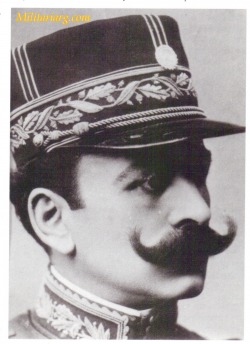
An entry in Wikipedia notes that the mandatory miltary service was originally established through the Ley Riccheri which was approved by Congress on December 11, 1901 after a tough 6 month long debate. It is now Argentine Law 4.301.
Mandatory military service provided useful developmental services for the still-young nation and presented the notion of citizenship and equality before the law. On one hand, the military service books and rolls were increasingly used as identification documents, as much for the ID of people as well as for electoral means. In this way, it was a step before hte Ley Saenz Pena on the path to voting and representative rights.
On the other hand, there were schools established in the barracks for the soldiers. It was a collaborative effort to fight illiteracy and integrate the children of immigrants.
A great event that marked the beginning of the mandatory military service was a large gathering of new soldiers in 1904 in Curamalal (located in the southeast of the Province of Buenos Aires). On being transferred to Buenos Aires for their pledge of allegiance to the flag, the public gave a long ovation to Minister Riccheri. Four days later he was promoted to general.
Riccheri was the son of Italian immigrants. Despite his humble beginning he grew to great importance in the Argentine military, converting it from basically a militia to a strong professional organization. He acquired 100 acres as Minister of War to construct the Campo de Mayo, a military base and training center. He played an important role in bringing the Mauser to Argentina.
Sources:Argentine Mauser Rifles 1871-1959 by Colin Webster
Guia de Uniformes Militares: Comandantes y Jefes Argentinos del Ejercito 1865-1945 by Jorge Crespo
Photo from the National Archives of Argentina.
Mandatory military service provided useful developmental services for the still-young nation and presented the notion of citizenship and equality before the law. On one hand, the military service books and rolls were increasingly used as identification documents, as much for the ID of people as well as for electoral means. In this way, it was a step before hte Ley Saenz Pena on the path to voting and representative rights.
On the other hand, there were schools established in the barracks for the soldiers. It was a collaborative effort to fight illiteracy and integrate the children of immigrants.
A great event that marked the beginning of the mandatory military service was a large gathering of new soldiers in 1904 in Curamalal (located in the southeast of the Province of Buenos Aires). On being transferred to Buenos Aires for their pledge of allegiance to the flag, the public gave a long ovation to Minister Riccheri. Four days later he was promoted to general.
Riccheri was the son of Italian immigrants. Despite his humble beginning he grew to great importance in the Argentine military, converting it from basically a militia to a strong professional organization. He acquired 100 acres as Minister of War to construct the Campo de Mayo, a military base and training center. He played an important role in bringing the Mauser to Argentina.
Sources:Argentine Mauser Rifles 1871-1959 by Colin Webster
Guia de Uniformes Militares: Comandantes y Jefes Argentinos del Ejercito 1865-1945 by Jorge Crespo
Photo from the National Archives of Argentina.
Motorizados Buenos Aires. 1954.
Caras y Caretas 1933.
4th Infantry Regiment 1933. Caras y Caretas.
Heavy Machine Guns Crew.
The 6th Regiment Infantry of Mercedes (1939)
1st Infantry Regiment Patricios, (1944)
1909 Mauser
(3) Leather Ammo Pouch 7.65 Mauser
1944
6th Infantry Regiment. Gral Viamonte.
6th Regiment "Gral Viamonte" Historic Uniform.
Mounted infantry
Calisthenics, Self-Defense and Military Skills (Pistas de combate)
Personal defense tactical exercise with wooden bayonets. The officer tries to neutralize the soldier.
Above the soldiers are scaling the walls with full equipment and Mauser 1909.
"Tirolesa", The method of passing over an area with a rope. The soldier would advance with his hands and then catch up with his feet crossed over the rope.
1946
6th Infantry Regiment. Gral Viamonte.
Rare photo which shows an official performing exercises along with his soldiers. He may be a lieutenant or captain.
Charge with bayonets, on the order "Armar Bayoneta",
Assault on obstacles and dropping down the walk. There was also a steep concrete wall that the soldiers had to climb and then go down the 90 degree decline on the other side with a rope.
The photo on the left is a model airplane in the middle of the frame, which is moved by someone with a string. It may be a sight or telescope training exercise. Note in the group standing back that there is a strange aparatus which may be a predictor. In the photo on the right is an officer accompanied by his assistant.
7th Infantry Regiment "Coronel Conde" and 8th Infantry Regiment "General O'Higgins.
Infantry School. May Field 1947.
Assault courses with obstacles, climbing across the basic skeleton of poles and moving on to the rope bridge.
Orthodox tactics of unarmed self-defense. The use of the buckle in the rear is common in combat uniforms up to the 1970s. It is seen in old photos of paratroopers and marines as well. It may have been to avoid the reflection of the metal.
Fencing with rifles.
R.R.M. 35: Advice for Marches according to a Regulation from 1938 (excerpt): comfortable dress (unbutton shirt, put on or take off coat as needed, put on sneakers instead of boots, etc.). At the march orders the soldiers should be able to talk, siing, smoke, and carry their rifles or carbines as they like (on their left or right shoulders or hanging) without the need to salute unless under special orders. They may march over natural paths and if they are in bad shape the infantry can march on both sides of the path or bypass it all together.
It is interesting how, even in that era, the well-being of the soldiers was evident. The march was to be as stress-free and enjoyable as possible.
It is interesting how, even in that era, the well-being of the soldiers was evident. The march was to be as stress-free and enjoyable as possible.
Motorized Infantry
8th infantry Regiment. Commodore Rivadavia (1934).
8th Infantry Soldiers practicing military skills, fencing with a Remington rifle that was emptied of mechanical parts and had a leather ball placed on the tip, (Esgrima de fusil).
Military bivouac - vivac.
